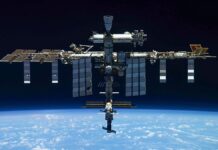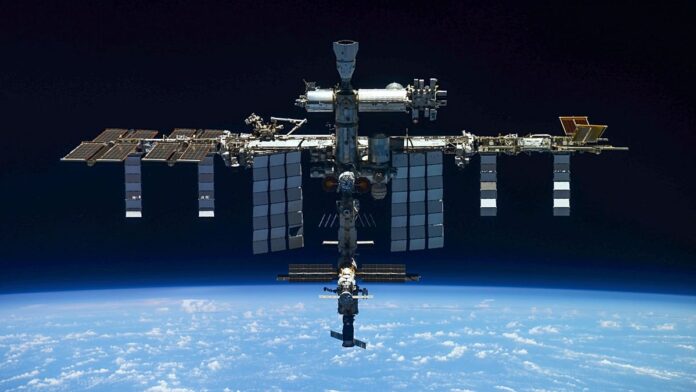The International Space Station (ISS) marks a remarkable quarter century since humans first called it home. On October 31, 2000, three astronauts from Russia and the United States embarked on a journey that would change space exploration forever. Their destination? A colossal, 109-meter long laboratory orbiting Earth—the ISS—where they would spend four months establishing life support systems and communications for long-duration stays in space, paving the way for future generations of astronauts.
Over the past 25 years, over 290 individuals representing 26 countries have visited this extraordinary platform. From seasoned astronauts to pioneering space tourists and even filmmakers, the ISS has become a hub of human endeavor in orbit. It’s hosted more than 4,000 experiments driven by the curiosity of over 5,000 researchers spanning 110 nations. These endeavors range from studying the effects of microgravity on living organisms to developing new technologies for space travel and beyond.
But the ISS isn’t just a laboratory; it’s a proving ground. Astronauts are honing their skills aboard this orbiting outpost in preparation for challenging deep-space missions, such as NASA’s ambitious Artemis program, which aims to return humans to the Moon’s surface by 2025 and eventually set sights on Mars.
A Dream Realized: Building a Space Station
The concept of a permanent human presence in space has captivated imaginations for decades. While individual nations pursued their own vision of what this might look like, the ISS emerged as a testament to international collaboration. It was born from an idea that first took shape in the American government’s mind during the 1950s: creating a modular orbital station capable of accommodating crews and refueling spacecraft on journeys towards long-term lunar bases.
The official genesis came in 1984 when President Ronald Reagan gave his approval, paving the way for partners from Europe, Canada, and Japan to join the American effort. As George Abbey, director of NASA’s Johnson Space Center at the time, reflected on the ISS’s 20th anniversary, he highlighted a crucial bridge built during its development: “the Russians allowed us [Americans] to live nearly 1,000 days in orbit on board their Mir space station.” The Shuttle-Mir program from 1994 to 1998 served as a critical testbed for future cooperation and laid the groundwork for the ISS.
Europe’s contribution was pivotal, solidifying its commitment in 1988 through a memorandum of understanding with NASA. The European Space Agency (ESA) designed and built two key elements: the European Columbus laboratory, specializing in physics, materials science, and life sciences research, and several Automated Transfer Vehicles (ATVs), essentially cargo ships capable of delivering up to seven tonnes of essential supplies, scientific equipment, and fuel to the ISS. Beyond these contributions, ESA also provided critical engineering expertise and design input, ensuring that over one-third of the station’s pressurized modules were a direct result of European ingenuity.
The culmination of this international effort is nothing short of remarkable: the largest human-made object ever launched into space. NASA describes it as “larger than a six-bedroom house,” complete with two bathrooms, a gym, and a panoramic bay window offering breathtaking 360-degree views of our planet. The station boasts a pressurized volume of 1,005 cubic meters and weighs nearly 420,000 kilograms—a tangible symbol of human ingenuity and perseverance.
A Gallery of Moments: Life Aboard the ISS
The ISS has served as a backdrop for both historic milestones and deeply personal moments over its 25-year lifespan. In 2003, Russian cosmonaut Yuri Malenchenko took part in an extraordinary wedding ceremony from orbit, marrying Ekaterina Dmitriev while soaring above Earth at 380 kilometers altitude.
American astronaut Mike Fincke experienced a different kind of family celebration from the ISS in 2004 when he listened as his wife gave birth to their daughter Tarali on Earth. “Tara” means “star” in the Indian dialect spoken by his wife’s family, and the cosmic connection was poignant.
Tragedy has also touched the lives of those aboard the station. In 2007, astronaut Daniel Tani received the devastating news from ground crews that his 90-year-old mother had died in a car accident. Then in 2011, astronaut Scott Kelly learned that his sister-in-law, Congresswoman Gabrielle Giffords, had been shot and survived a horrifying attack.
The recent past has also seen its share of drama. In 2024, astronauts Butch Wilmore and Suni Williams embarked on what was planned to be a weeklong mission aboard Boeing’s new Starliner capsule for testing purposes. However, safety concerns prompted an extended stay of over nine months at the station before SpaceX, owned by Elon Musk, eventually ferried them home.
While most visitors have represented their nations through official space programs, the ISS has also become accessible to private citizens seeking adventure beyond Earth. In 2001, Dennis Tito, a Californian billionaire, defied NASA objections and flew with the Russians, becoming the first space tourist. This marked the beginning of a new era in space access, further solidified when Russia continued to offer commercial flights for individuals like a movie crew who ventured to the station in 2021.
The ISS continues its vital role as humanity’s outpost in orbit, welcoming new crews regularly. In June 2023, astronauts from India, Poland, and Hungary joined veteran Peggy Whitson, marking a historic moment with the first female commander of the ISS, among other milestones.
Scientific Frontiers: A Legacy Beyond Orbit
Beyond its role as a platform for human presence in space, the ISS has been instrumental in advancing scientific understanding across diverse fields. Research conducted aboard the station has yielded advancements in life support systems that are now being adapted for commercial spacecraft bound for future lunar outposts and eventually Mars missions through NASA’s Artemis program.
Astronauts have experimented with growing over 50 species of plants—vegetables, grains, and legumes—demonstrating the potential for self-sustaining food production during extended space travel without relying on resupply missions from Earth. The development of 3D printing technology aboard the ISS has proven capable of creating tools and spare parts in orbit, showcasing a potentially invaluable capability for future long-duration missions that could be limited by resource constraints.
A New Chapter: Farewell to an Era
While the International Space Station’s legacy is secure, its operational lifespan is drawing to a close. NASA, Roscosmos (Russia’s space agency), and international partners have established plans for deorbiting the station in 2030. This decision stems from the cumulative effects of years of docking and undocking procedures, coupled with the harsh conditions of space that continuously subject its materials to extreme temperature fluctuations.
The ISS will be steered down through Earth’s atmosphere towards a designated remote oceanic region where it will safely disintegrate upon re-entry. NASA has awarded SpaceX a nearly $1 billion contract to execute this complex maneuver in early 2031, leveraging the company’s expertise with its powerful Falcon rocket and Dragon capsule.
For Europe, the ESA will maintain its commitment to low Earth orbit (LEO) operations through initiatives like Terrae Novae, which involves sending robotic explorers ahead of humans to destinations like the Moon and Mars. It is also actively pursuing commercial partnerships to provide vital in-flight equipment that supports scientific research conducted by European scientists aboard future space platforms beyond the ISS.
The International Space Station represents a triumph of international collaboration, technological innovation, and unwavering human curiosity. As it gracefully makes its final descent from orbit, it leaves behind an enduring legacy of discoveries, innovations, and inspiration that will continue to shape our understanding of ourselves and our place among the stars.





























![[Огляд] Xiaomi MiJia M365 – відмінний [електросамокат] від надійного китайського виробника](https://web-city.org.ua/wp-content/uploads/2018/01/P1160682_1-218x150.jpg)













![[DNS probe finished no Internet] Як виправити помилку?](https://web-city.org.ua/wp-content/uploads/2018/01/1-42-218x150.jpg)














![Neoline X cop 9000 — приголомшливий гібридний відеореєстратор [Огляд]](https://web-city.org.ua/wp-content/uploads/2018/01/Screenshot_3-324x235.jpg)













